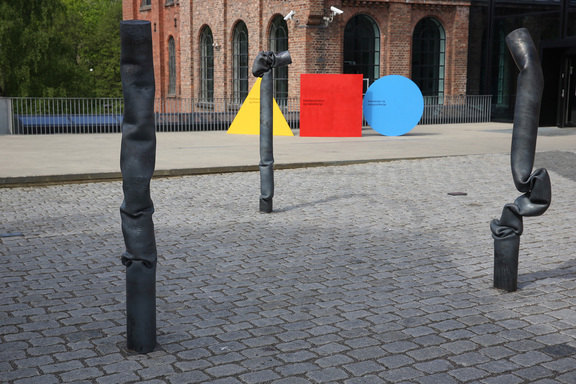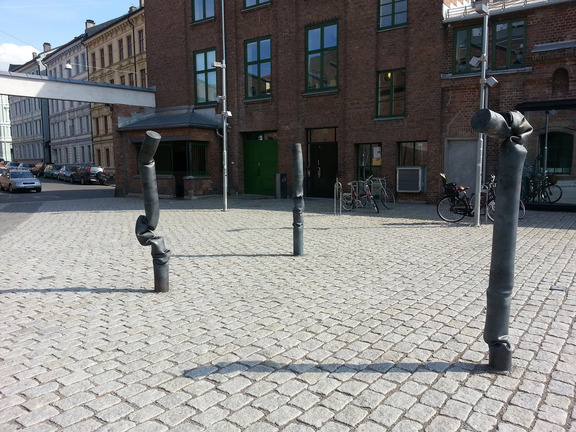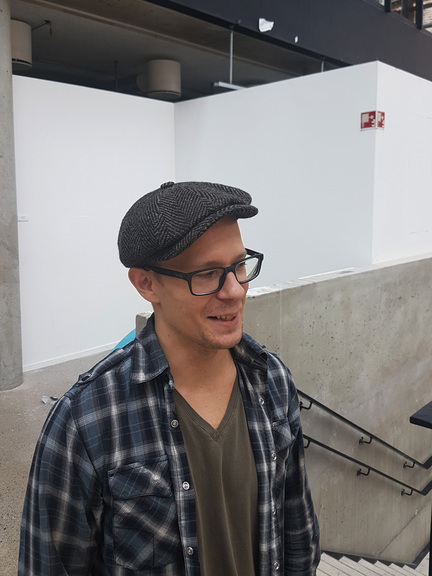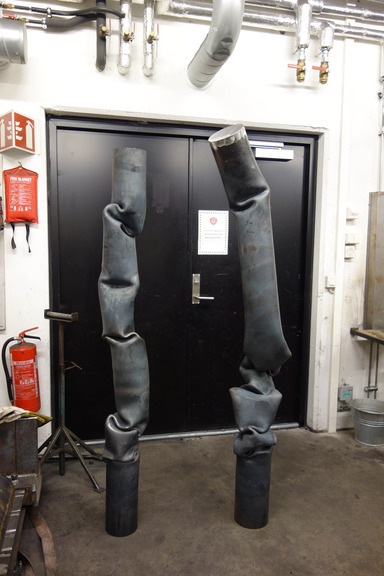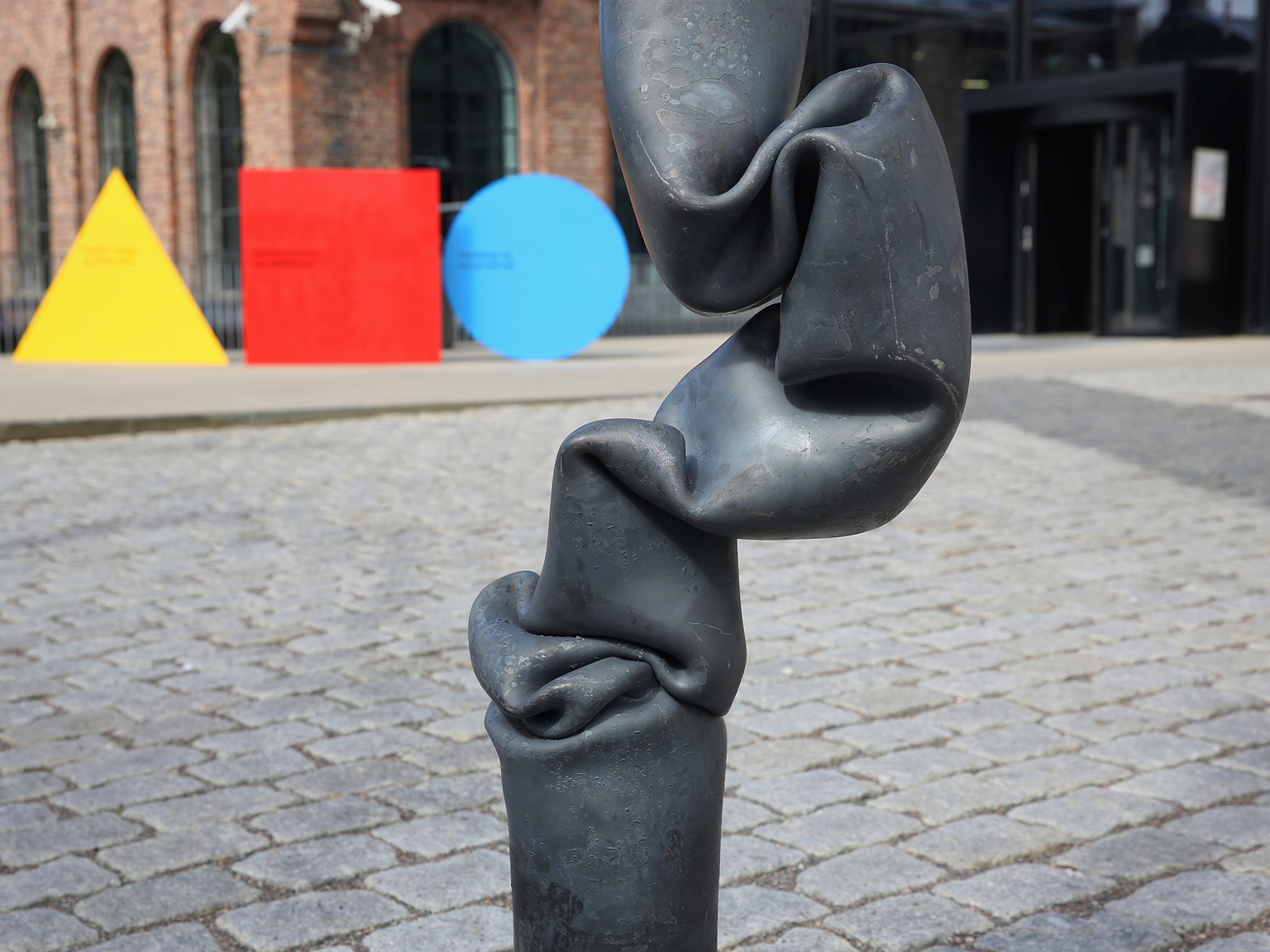
Graduation project snapped up by the municipality of Oslo
Jonas Olsson recently sold his graduation project from the Bachelor’s programme in medium and material-based art to the municipality of Oslo’s art collection.
“It was quite a shock,” says Jonas Olsson.
During the final weekend of the graduation exhibition for the Bachelor’s programme in medium and material-based art, Olsson received an e-mail from the municipality of Oslo, which expressed its interest in buying the three metal sculptures he was presenting as his graduation project.
“It’s just so amazing that they bought the piece,” Olsson says. “It’s the best thing that could’ve happened to me.”
The artistic process
Each of the metal sculptures weighs around 90 and 120 kg. In order to create works of this size, Olsson needed to first construct a self-designed gas oven (depicted below). He used the oven to heat up gigantic steel pipes, and while the pipes were still warm he used a hydraulic jack to press them together.
Olsson began using this process at the tail-end of his second year at the programme, and he kept refining the time-consuming and physically intense process throughout his final year, all the way up till the graduation exhibition. The result is the three sculptures that have now been snapped up by the municipal authorities in Oslo.
“In my project I let the material take part in the decision-making. The metal transforms itself and bends and twists, without me controlling anything but where the pressure and the heat are applied along the pipes. The sculptures then become a collaboration with the material itself.”
Pernille Skar Nordby, an advisor for the municipality of Oslo’s art collection, highlights the sculptures’ size and treatment as the most interesting aspects of the work.
“The way the steel has been treated makes it look like something other than it actually is,” she notes. “The artist has not been in control of what the process itself wanted to do with the steel, and the elements of gravity and plasticity have been turned on their heads. This adds a subtle twist to the sculptures even is it seems to say something about how society, humanity and nature all evolve outside of anyone’s control.”
The placement of the sculptures
Nordby is also quick to mention that the exhibition as a whole was highly promising.
“It’s clear that the students have worked hard both on their own works but also on putting on the exhibition together,” she says.
The municipality of Oslo owns several thousands works of art, including five hundred pieces that are on display in various public spaces, in addition to works that are currently adorning the city’s schools and other public buildings, in nearly a thousand different locations in total. The authorities have yet to decide where Olsson’s piece is to be placed, but they are confident the sculpture will both delight and challenge passers-by who are fortunate enough to encounter it.
“The sculpture can be placed outdoors, but it can work just as well indoors, interacting with either newer or older architecture,” Nordby concludes.
“Current architecture typically features a scarcity of walls and an abundance of glass panes, so this is a group of works we are becoming ever more interested in.”
